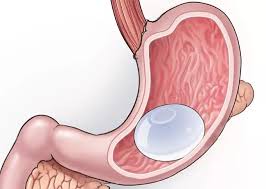Weight loss is a journey that many individuals embark upon, seeking effective and sustainable solutions to achieve their desired health and fitness goals. Endoscopic Intragastric techniques have emerged as a transformative approach in this realm, offering a minimally invasive alternative to traditional weight loss methods. This blog explores how Endoscopic Intragastric is redefining weight loss with innovative techniques, delving into its benefits, procedures, and how it can help individuals achieve lasting results.
What is Endoscopic Intragastric?
Understanding the Basics

Endoscopic Intragastric refers to a minimally invasive procedure used to aid in weight loss. It involves the use of an endoscope, a flexible tube with a camera, to perform various interventions within the stomach. Unlike traditional weight loss surgeries, such as gastric bypass, Endoscopic Intragastric procedures typically require no large incisions and have a faster recovery time.
How It Works
The procedure begins with the insertion of the endoscope through the mouth and into the stomach. Depending on the specific technique used, the endoscope might be employed to place a balloon or a similar device in the stomach, or to perform other modifications that help reduce appetite and promote weight loss. The goal is to create a feeling of fullness with a smaller amount of food, thereby helping individuals manage their weight more effectively.
Benefits of Endoscopic Intragastric Techniques
Minimally Invasive Approach
One of the primary advantages of Endoscopic Intragastric is its minimally invasive nature. Unlike traditional surgeries that require large incisions, this technique uses only small instruments and a thin, flexible tube, resulting in less pain and a quicker recovery. Patients often experience reduced downtime and can resume their daily activities sooner.
Shorter Recovery Time
The recovery time for Endoscopic Intragastric procedures is significantly shorter compared to traditional weight loss surgeries. Patients typically experience minimal discomfort and are often able to return to work and regular activities within a few days. This is a considerable benefit for those with busy lifestyles who seek an effective weight loss solution without prolonged recovery periods.
Reduced Risk of Complications
The minimally invasive nature of Endoscopic Intragastric also means a lower risk of complications associated with larger surgical procedures. There is a reduced risk of infection, blood loss, and other complications commonly associated with major surgeries. This makes Endoscopic Intragastric a safer option for many individuals seeking weight loss solutions.
Types of Endoscopic Intragastric Procedures
Intragastric Balloon
The intragastric balloon is one of the most common Endoscopic Intragastric procedures. It involves placing a deflated balloon in the stomach via an endoscope. Once in place, the balloon is inflated with a sterile solution, which occupies space in the stomach and creates a sensation of fullness. This helps individuals consume less food and lose weight more effectively.
Endoscopic Sleeve Gastroplasty (ESG)
Endoscopic Sleeve Gastroplasty (ESG) is another innovative Endoscopic Intragastric procedure. During ESG, an endoscope is used to place sutures in the stomach to reduce its size and capacity. This procedure mimics the effects of a traditional sleeve gastrectomy but with a less invasive approach. ESG has shown promising results in achieving significant weight loss and improving overall health.
Intragastric Balloon with Gastric Plication
This hybrid Endoscopic Intragastric technique combines the intragastric balloon with gastric plication. Gastric plication involves folding the stomach's lining to reduce its size and capacity. The addition of the balloon further enhances the sensation of fullness and weight loss results. This approach offers a comprehensive solution for those seeking more significant weight loss outcomes.
Effectiveness of Endoscopic Intragastric Techniques
Weight Loss Results
Studies have shown that Endoscopic Intragastric procedures can lead to significant weight loss. Patients who undergo these techniques often experience substantial reductions in body weight, which can contribute to improved overall health and reduced risk of obesity-related conditions. The effectiveness of these procedures varies depending on individual factors, but many patients achieve their weight loss goals with consistent adherence to dietary and lifestyle changes.
Long-Term Success
Achieving long-term success with Endoscopic Intragastric involves not only the procedure itself but also a commitment to healthy lifestyle changes. Patients are encouraged to adopt a balanced diet and engage in regular physical activity to maintain their weight loss results. The support provided by healthcare professionals and the integration of behavioral therapy can also play a crucial role in achieving and sustaining long-term success.
Considerations and Precautions
Eligibility for the Procedure
Not everyone is a candidate for Endoscopic Intragastric procedures. Candidates are typically evaluated based on their body mass index (BMI), overall health, and previous weight loss attempts. It is essential to undergo a thorough evaluation to determine if this approach is suitable for your specific needs and goals.
Potential Side Effects
While Endoscopic Intragastric techniques are generally safe, there are potential side effects to be aware of. These may include nausea, vomiting, or abdominal discomfort. However, these side effects are usually temporary and resolve as the body adjusts to the changes. It is important to discuss potential side effects with a healthcare professional and follow post-procedure instructions carefully.
Post-Procedure Care
Proper post-procedure care is crucial for the success of Endoscopic Intragastric techniques. Patients should follow dietary guidelines, attend follow-up appointments, and adhere to recommended lifestyle changes. This ensures that the procedure's benefits are maximized and helps prevent potential complications.
Conclusion
Endoscopic Intragastric techniques represent a significant advancement in the field of weight loss. With their minimally invasive nature, reduced recovery time, and effectiveness in achieving weight loss goals, these innovative procedures offer a promising alternative to traditional methods. By understanding the various types of Endoscopic Intragastric procedures, their benefits, and the considerations involved, individuals can make informed decisions about their weight loss journey and take steps toward a healthier future.
Incorporating Endoscopic Intragastric techniques into your weight loss strategy can lead to transformative results, provided that you are committed to making the necessary lifestyle changes. As with any medical procedure, it is essential to seek guidance from a qualified professional to determine the best approach for your individual needs and ensure a successful outcome.

